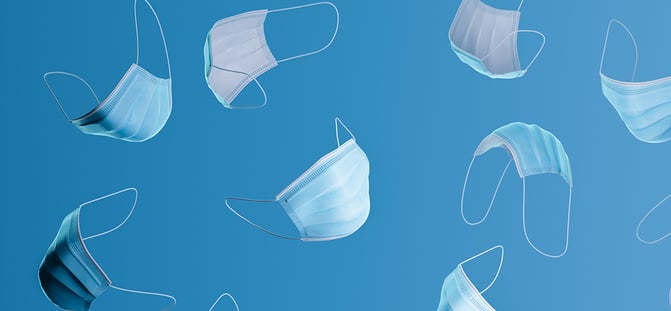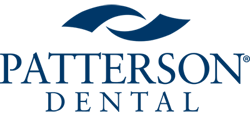
Introduction
Federally qualified health centers (FQHCs) provide dental and medical care to United States residents excluded from the country’s employment-based healthcare system. 1–3 With the onset of the COVID-19 pandemic, FQHCs found themselves in the position of providing services in a constantly changing public health climate to not only their existing patients, but also to individuals newly eligible for Medicaid benefits due to job losses and other financial consequences of pandemic shutdowns.4–6 Mandatory dental office shutdowns and service limitations, appointment cancellations and delays, and concerns about the safety of their patients, employees, and employees’ families required FQHC staff to constantly adapt in order to continue providing high-quality and necessary care to halt or treat existing oral disease and prevent new or worsening conditions.7–9
We studied FQHC providers’ experiences, observations, and perspectives on delivering dental services during the first year of the COVID-19 pandemic (between March 2020 and February 2021).7 We conducted interviews with 21 dental staff members (clinical directors, dentists, executives) from 15 FQHCs in seven states between January 26, 2021 and February 26, 2021 via Zoom videoconferencing software. We conducted a thematic analysis of transcribed interview recordings. Full details of the methodology can be found here.
This Monograph aims to elaborate on FQHC dental staff members’ experiences during the first year of the COVID-19 pandemic by providing in-depth quotations. Quotations provide supplemental evidence on three themes (Unpredictability, Resources, and Permanent Transformation), and each theme is divided into sub-themes.
Theme 1: Unpredictability
Similar to those around the world, with the COVID-19 pandemic shutdowns came a sense of unpredictability for the FQHC dental providers. One sub-theme that emerged regarding unpredictability included concerns about safety, revenue, and responsibility for patients’ well-being. A second sub-theme addressed collaborations overall, within their own clinic teams, with patients and the community, and within the dental community.
Theme 2: Resources
With the need to provide consistently high-quality dental care came the need for these providers to leverage different kinds of resources. Descriptions of resource needs fell into three different subthemes. Policy resources came from federal and state governments (e.g., CDC, OSHA), professional organizations (e.g., the American Dental Association), and from within their own practices (e.g., clinic administration). Human resources came into play with regard to task-shifting due to staffing needs, staff consolidation and scheduling, and temporary staff furloughs and absences. Discussions about material resources included financial adjustments (e.g., application for federal grants), modifications of physical space and clinic flow, needs for personal protective equipment (PPE), obtaining vaccinations for clinic staff, and point-of-care COVID-19 testing.
Theme 3: Permanent Transformation
Many respondents discussed how the changes made during the first year of the pandemic are likely to become a permanent transformation of aspects of clinical practice. Sub-themes mentioned by the interviewees included topics related to expectations about and implementation of additional infection control procedures to address air-borne pathogens; adjustments to and experiences with telehealth and teledentistry; and collaboration, integration, and reciprocation with medical colleagues and facilities to provide integrated care. Further, interviewees discussed the role of acknowledging their own emotions during high levels of change and uncertainty, along with the need to emphasize prevention to prevent and reduce dental disease in the face of delays in dental care.
Summary
The COVID-19 pandemic necessitated immediate and ongoing changes in how FQHCs delivered dental services, and is expected to produce lasting effects. Dental providers’ perspectives provide important insights on managing unpredictability during a public health crisis, drawing on a variety of material and other resources, and identifying permanent transformations in the sector.
______________________
Dr. Sarah E. Raskin, Dr. Lisa Heaton, Dr. Vuong K. Diep, Dr. Katherine Chung-Bridges, Dr. Julie Frantsve-Hawley
References
- Jones E, Shi L, Hayashi AS, Sharma R, Daly C, Ngo-Metzger Q. Access to oral health care: the role of federally qualified health centers in addressing disparities and expanding access. Am J Public Health. 2013;103(3):488-493. doi:10.2105/AJPH.2012.300846
- Northridge ME, Kumar A, Kaur R. Disparities in Access to Oral Health Care. https://doi.org/101146/annurev-publhealth-040119-094318. 2020;41:513-535. doi:10.1146/ANNUREV- PUBLHEALTH-040119-094318
- Edelstein B. The dental safety net, its workforce, and policy recommendations for its enhancement. J Public Health Dent. 2010;70(SUPPL. 1). doi:10.1111/j.1752-7325.2010.00176.x
- Saloner B, Gollust SE, Planalp C, Blewett LA. Access and enrollment in safety net programs in the wake of COVID-19: A national cross-sectional survey. PLoS One. 2020;15(10). doi:10.1371/JOURNAL.PONE.0240080
- The Uninsurance Rate Held Steady during the Pandemic as Public Coverage Increased | Urban Institute. Accessed December 22, 2021. https://www.urban.org/research/publication/uninsurance-rate-held-steady- during-pandemic-public-coverage-increased
- Simon J, Mohanty N, Masinter L, Hamilton A, Jain A. COVID-19: Exploring the Repercussions on Federally Qualified Health Center Service Delivery and Quality. J Health Care Poor Underserved. 2021;32(1):137-144. doi:10.1353/HPU.2021.0013
- Raskin SE, Diep VK, Chung-Bridges K, Heaton LJ, Frantsve-Hawley J. Dental safety net providers’ experiences with COVID-19 year one service delivery should inform dental pandemic preparedness. J Am Dent Assoc. Published online November 2021:undefined-undefined. doi:10.1016/J.ADAJ.2021.11.005
- Brian Z, Weintraub JA. Oral Health and COVID-19: Increasing the need for prevention and access. Prev Chronic Dis. 2020;17:1-10. doi:10.5888/PCD17.200266
- Singh S. Public Oral Health Care During COVID-19: Time for Reflection and Action. Front Med. 2021;8:610450. doi:10.3389/FMED.2021.610450


